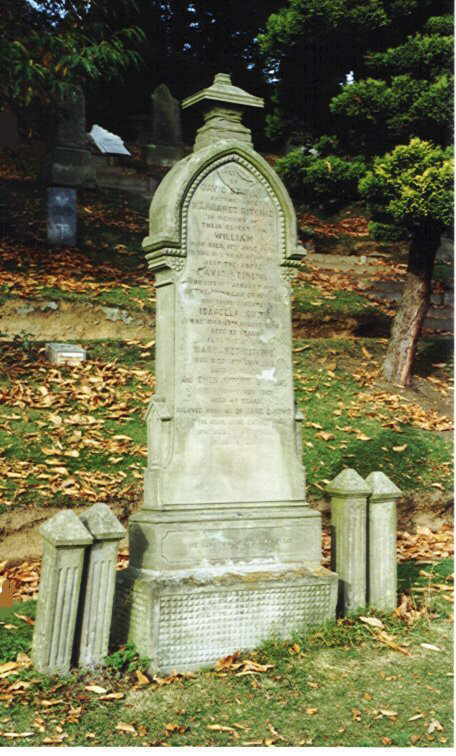
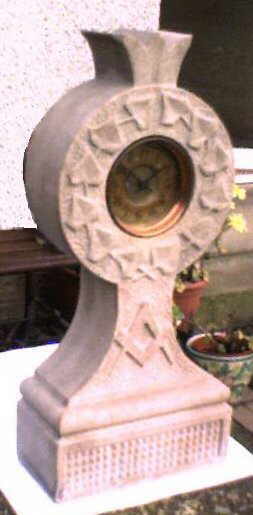
Stirling Stonework DesignThis page discusses the very speculative tale of a possible link to my ancestors. To say the evidence is circumstantial is to credit it with far more credibility that it deserves. The 'tale' is based on a diamond cut design in stone, several examples of which can be found on this page. The first two photographs are work by my maternal grandfather, Ewen R. Stirling 1878 - 1923. |


The grave memorial stone is at Balgay Cemetery, Dundee, Scotland. Note the Gothic styled arched top with the line of 'diamonds' incorporated. I have the clock shown, which is assumed to be his apprentice 'piece'. |
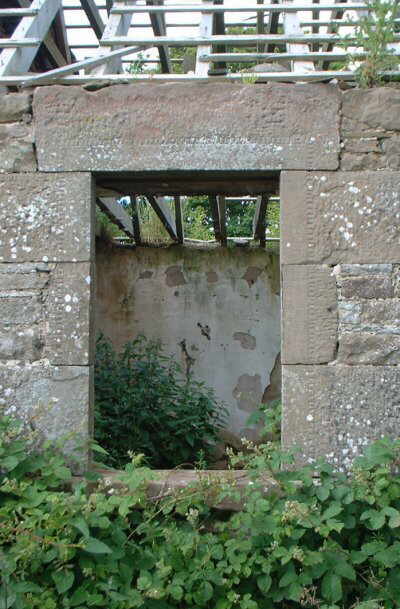 |
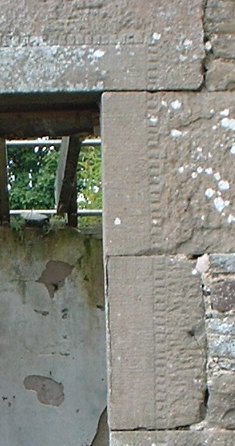 |
Of a ruinous cottage at Glencoe Park, near Forfar, Angus, home of several generations of Stirlings. Closer inspection of the stone tooling of this window surround will show the likely beginnings of the carving of the design being discussed on this page. I have been unable to find this engraving on any other building. If you are in a position to offer any advice on this subject or provide photographs of other buildings with the same design, please CONTACT the Webmaster, thankyou. (Click here for a map showing Glencoe Park.) |
|
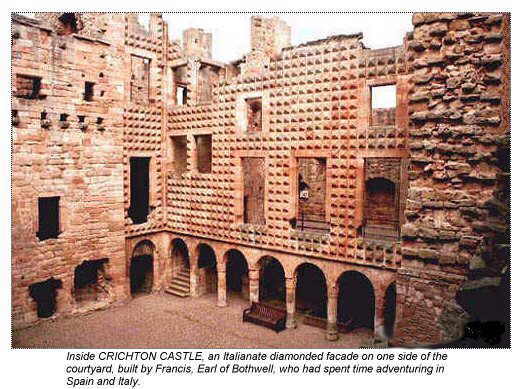
A story about a possible SKIRLING / STIRLING link and Monks from France.=========================================================The idea to put this 'tale' on my website started with the following (edited) message to Alison in November 2001 . ."When visiting the recently (2001) opened Visitor Centre at Arbroath Abbey I read there about the connection with French Monks - from near Chartres - Tironensians - who sailed for Britain and were responsible for several abbeys as they moved north. Such is well described and demonstrated at visitor centre. Further down this page is a submission from Alison which adds much to the 'story of the monks'.They were mason-monks – self-explanatory - and apparently built at least two abbeys in the Scottish Borders before coming to Arbroath, and possibly moved further north too? Coincidently, in the Scottish Borders is a village called SKIRLING. When gathering much STIRLING Family History information (available on my website) I noted, too, much information about the spelling as SKIRLING in earlier times. My earliest identified ancestor is recorded with that spelling at the time of his marriage in 1773. In preparing my data it was soon very obvious that the use of the Skirling spelling was not generally to be found in the areas of Scotland more normally associated with the STIRLING surname, in fact, there were a few in Edinburgh, a few in south Fife, an apparent large family grouping in Banchory Devenick parish just south of Aberdeen, several in the 'Howe of the Mearns', Kincardineshire, BUT, by far the greatest concentration of records was in Angus, particularly around the burghs of Arbroath and Forfar. I am convinced that this is not a coincidence.I put my supposition to a professional historian and received this comment, "I have looked at the 'Regesta for Robert I' and Skirling is considered to be Scravelyne in Peeblesshire. Which really does not explain why they turn up so much in your part of the world. Though it is possible that someone from Skirling moved away and was described by where they came from, rather than their usual surname."My SKIRLING finds - around 500 in general - dating from late 1500's (the start of Old Parish Registers) appear on my 2,500 Stirling database which is downloadable from my website.A further page has several photographs of the decorative carvings at Arbroath Abbey where the pyramid or diamond shape can be seen.HERE you can see a large photograph (from a Historic Scotland publication) of the design incorporated into the arches of a building at Iona, off Mull, in Western Scotland. (299kb). Compare this to detail of the gravestone at the top of the page.You can find many other photographs HERE of a trip to Iona by the Webmaster in Spring 2003.
I know that nearly all known generations of my STIRLINGS were involved with stone, and indeed, some may have been the owners of Tollbooth Quarry, stone from which the Town Council Building at the Cross in Forfar, Angus was built. For several generations there are STIRLINGS recorded as resident at houses at Glencoe Park, nearby to Forfar on the road to Dundee.My grandfather was the last of my direct line known to be involved with stone, but I understand he was more more usually involved with the 'fancy work', for example (and such as it is!) that of the Caird Hall in Dundee. He reputedly carved the Camel 'passant' that used to be on the huge lintel that bridged the gates of Bowbridge Jute Works in Main Street, Dundee - where did this end up? ( I am currently involved with enquiries about this item.) You can see above photographs of a gravestone that he carved (eventually his own!) and a stone clock (not very attractive), which I suspect may have been his 'apprentice piece'. Both have the 'pyramid' or 'diamond' design carved as panels on the plinths of both. This design is almost identical to a prominent feature at Crighton Castle - in the SCOTTISH BORDERS!So, have I come full circle - all very circumstantial - The monks building abbeys, including the Scottish Border area - Skirling a village there - the 'route via Edinburgh, south Fife, Arbroath, and north and east to Moray. I have found this design at Arbroath Abbey and - possibly with a little bias - I found what appears to be a worn example - you can inspect my photographs.So, does this make a good yarn, or could there be some truth in this - what do YOU think?I would be interested to get comments about this subject and further examples of the stone design.============ |
|
Edited article from Alison Mary Queen of Scots was a favourite of mine and I visited lots of places associated with her - Crighton Castle was a favourite. Her half-brother had married there around 1561/1562 and she would likely attend the wedding. With regard to the diamond facade, a quote from Marmion in the guidebook:'Still rises unimpaired below,
|
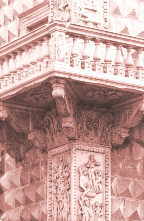 |
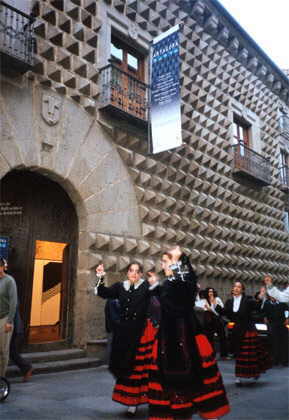 |
The guide says Crighton Castle (photo above) was inspired by the Palazzo dei Diamanti at Ferrara in Northern Italy, |
. . but it is similar to the Casa de los Picos in Segovia, to the North of Madrid, Spain. |
(Note that the 'diamonds' are offset in the European examples shown above.)
 |
| Oriel Chambers at 14 Water Street, Liverpool makes good use of the design to decorate the noble pillars. This famous building by Peter Ellis was built in 1864. You can read much and find other photographs elsewhere on the Internet including the renowned - www.http://en.wikipedia.org/wiki/Oriel_Chambers |
A similar style facing on two memorial bases to be found in Monikie Kirkyard, but with the 'diamonds' offset as in the Italian and Spanish designs above. |
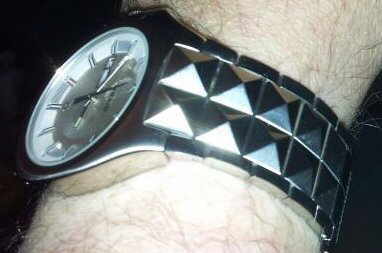
Watch strap |